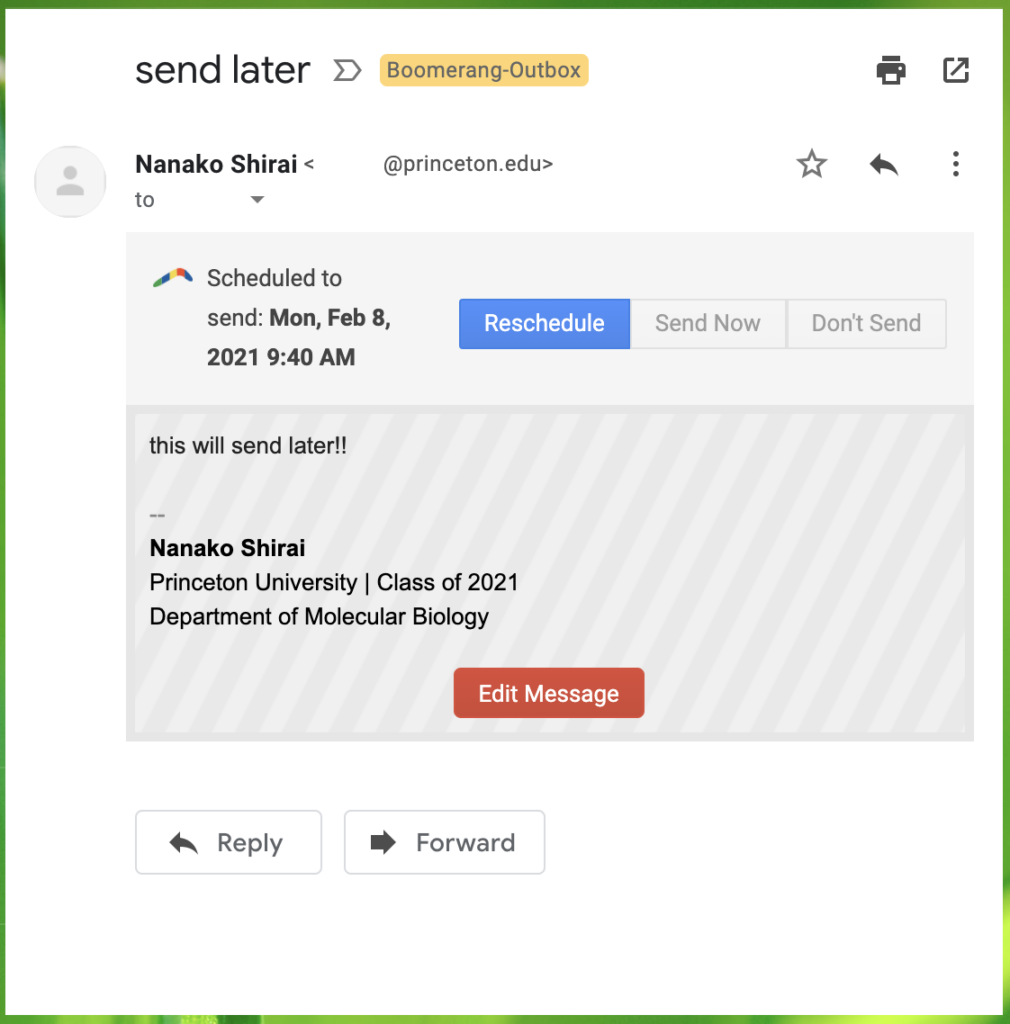“What? Why would I ever need to read an article about how to write an email?” This is what my first thought would’ve been if I ever saw an article like this. While many Princeton students probably understand the basics of how to write an email (type, then hit send), today, I wanted to go over tips to use when “cold emailing” someone.
Before coming to Princeton, the emails that I wrote were sent to my friends and high school teachers. I’d only ever emailed people that I already knew. However, throughout the years, I’ve learned that email is wonderful ⎯ and useful for research ⎯ because you can contact people who you don’t already know! Although learning how to write emails is something that’s not taught formally, I think it’s increasingly important to know what to do and what not to do when you’re trying to catch the attention of someone you’ve never met or talked to.
The subject line
This is actually the most important part of the email writing process. The Gmail app on my phone has 1,469 unread emails. The huge number of unread emails is almost inevitable in this email-heavy age, when an average office worker gets 121 emails a day. In other words, I, and many other people, make a decision about whether to read an email or not by looking at the subject line.
So how do you write an intriguing subject? When writing the email, there are two main things to include: who you are and why you’re emailing them. You want to do your best to convey why they should take time out of their email scrolling to read your email. Of course, it’s no good if the subject is too long — you want to drop clues, not try to explain everything.
Below are sample subject lines:
“Question about the EVcouplings output from Nanako, a Princeton student”
“A request for interview by Nanako, a science journalism student at Princeton”
As you can tell from the sample subject lines, I’ve used cold emailing to reach out to the author of an article to ask clarifying questions about the output of a computational program. I decided to email because I had already spent a lot of time pouring over the manuscript to make sure that my question wasn’t answered in writing. They responded within a few days, and it was really encouraging to get a direct answer from the author.
The message
Once you’ve caught their attention, it’s best to try to get to the point as quickly as you can. You don’t want to write a long, winding email that’s hard to follow. A study found that 50-125 words is the sweet spot. If you’re asking for attendance at an event, or asking them to submit something by a deadline, you should bold the relevant dates and times so that they can see the important parts of the email in a glance.
Make sure that it’s easy for the recipient to respond. If you’re asking to meet with them, provide possible dates and times. If you’re asking questions, it might help to outline and bullet them so that they’re easy to see.
Although you probably don’t need the reminder, thank them for their time at the end and make sure that they have a way of getting back to you (whether that be an email or a phone number).
The timing
The third thing to consider is when to send the email. It depends on what you’re asking for, but in general I try to schedule my emails so that they’re sent early in the morning (8-9am). The reason I do this is because if I were the recipient, and got an email at around 7pm at night, I would be less inclined to respond immediately since it’s technically “after hours”. By the time I finally get around to checking the email in the morning, it’ll probably be buried under the many, many emails that I got throughout the night, and I’ll accidentally forget to respond!
If you use Gmail or Outlook, you can schedule emails to send later by using Boomerang, which is an extension. It has a lot of different features, like stopping your inbox from receiving messages. The main feature I use is to schedule emails so that I can write them beforehand, and then have them send automatically when the time is right. The extension should give you 10 free scheduled emails per month. (Gmail also has a built-in feature to schedule emails to send later that you can access by clicking on the right-facing arrow next to the “Send” button.)

The follow up
If the recipient still hasn’t responded after three to four days, you can try to follow up with them by sending another email. It’s known that follow-up emails have a better response rate than the initial email. I would recommend “replying” to the email you sent previously, rather than sending a completely new email.
Finally, like when you sent your initial email, make sure that the email is easy to respond to. If asking to meet, suggest possible dates and times. If you have questions, outline them again.
—
I’ve learned these tips through “cold emailing” thousands and thousands of times myself. I probably haven’t covered everything that you could do, but I hope this proves to be a good jumping-off point for starting to write an email!
Nanako Shirai — Natural Sciences Correspondent

